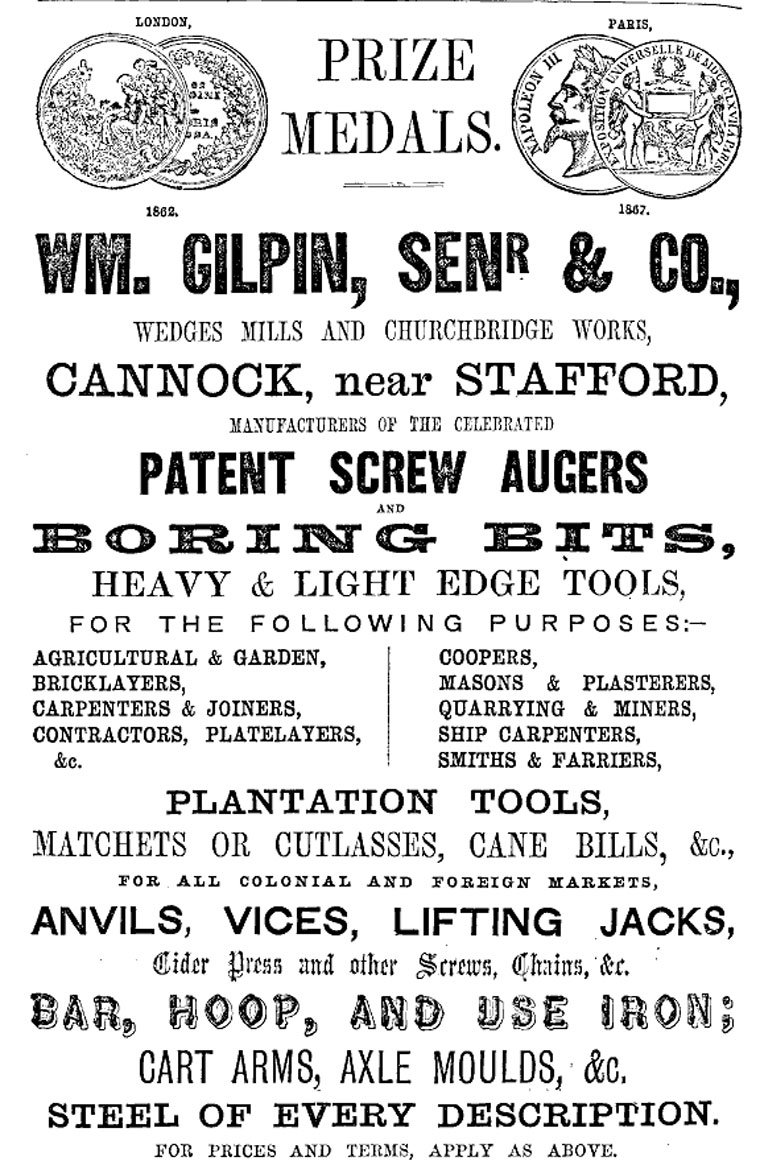Well, that was a nice little challenge.
I started with a text that is often useful for this sort of thing - Volume 2 of Holtzapffel's monumental "Turning and Mechanical Manipulation" published in 1846. Ignore the title; this volume is one long digression aimed at describing and categorising how tools work. It's a great resource for lots of detail on chisels, saws, planes, files - and boring tools. It includes a description of the new American screw auger which has a detachable cutter wedged into a slot - I wonder if you have any of those Geoff - and it mentions what we would now recognise as a square auger for a mortising machine. A footnote says:
"The author has never seen one; it seems far too complicated an instrument for general purposes, and its success appears to be overrated." We can all make mistakes, even the experts.
But I digress. The point is that the absence of the Gedges pattern from the book suggests it was unknown in 1846.
Beside Holtzapffel on the bookshelf is a 1912 edition of Paul Hasluck's "Woodwork", much of which is devoted to guiding the amateur on what to buy in the big tool shops of the day. He sums up a variety of bits in these words:
"Most of the patents have now expired, and there is not much to choose between any of the following: Gedge's, Scotch Pattern, Jennings', single twist and solid nose. Gedge's and Jennings' are particularly good." So no real help there, except to give us a latest date we could have guessed any way.
Wondering if Gedge actually was English or American, I checked Datamp, which seems to have no reference to anyone of that name. So maybe he was English and didn't take out a US patent.
Over to Grace's Guide - not much direct help, except to show me that a John Gedge seems to have been an inventive sort of chap, with bright ideas about drying grain, coupling railway carriages, billiard cues, ladies' dresses and much more, but there was no mention of his auger.
I tried a text search at archive.org but that seemed to bring only lots of references to a feeding device for invalids.
But a text search at Google books brought the answer. This link should lead to a summary of English Patents for 1854. There, you can find patent number 1872, awarded to John Gedge, of 4 Wellington Street South Strand, Middlesex (ie what anyone now would call central London).
This link should lead to the book where you can read all the details and learn that the patent covered several specialised variants, for greater smoothness or for use on end grain.
https://books.google.co.uk/books?id=KXp ... ger&f=true
but meanwhile here's the picture
I hope this helps!














































